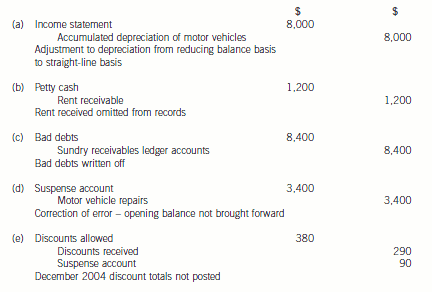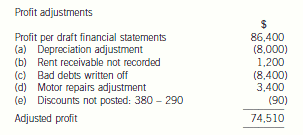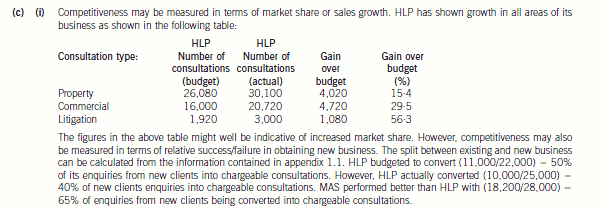注册ACCA会员需要什么材料
发布时间:2022-05-18
最近不少小伙伴在咨询ACCA考试相关的问题,为了帮助大家了解更多,51题库考试学习网为大家带来了ACCA考试相关资讯,一起来看看吧!
步骤一:准备注册所需材料
1、在全球官方网站进行注册:
(1)在线上传注册资料扫描文件
(2)采用纸质材料将注册资料递交ACCA代表处
步骤二:在全球官方网站进行注册
(1)在线注册地址http://www.accaglobal.com/en/qualifications/apply-now.html
(2)填写相关个人信息(如姓名、性别、出生日期等)
(3)填写相关个人学历信息(如毕业院校、学历、专业等)
(4)在线上传注册资料
(5)若学员计划申请免试,在填写完毕Your Qualifications之后,系统便会自动显示学员有可能获得的免试科目,最终免试结果以注册成功后ACCA英国总部的审核结果为准;如需放弃免试,需点击相应科目Give Up选项
(6)若学员放弃牛津布鲁克斯大学的学位申请资格,需在Bsc Degree处勾选是否放弃
在校学生所需准备的注册材料:
中英文在校证明(原件必须为彩色扫描件)
中英文成绩单(均需为加盖所在学校或学校教务部门公章的彩色扫描件)
中英文个人身份证件或护照(原件必须为彩色扫描件、英文件必须为加盖所在学校或学校教务部门公章的彩色扫描件)
2寸彩色护照用证件照一张
用于支付注册费用的国际双币信用卡或国际汇票(推荐使用Visa)
非在校学生所需准备的注册资料(符合学历要求):
中英文个人身份证件或护照(原件必须为彩色扫描件、英文件必须为加盖翻译公司翻译专用章的彩色扫描件)
中英文学历证明(原件必须为彩色扫描件、英文件必须为加盖翻译公司翻译专用章的彩色扫描件*MPAcc专业,需提供中英文成绩单*国外学历均需提供成绩单)
2寸彩色护照用证件照一张
用于支付注册费用的国际双币信用卡或国际汇票(推荐使用Visa)
非在校学生所需准备的注册资料(符合学历要求):
中英文个人身份证件或护照(原件必须为彩色扫描件、英文件必须为加盖翻译公司翻译专用章的彩色扫描件)
中英文学历证明(原件必须为彩色扫描件、英文件必须为加盖翻译公司翻译专用章的彩色扫描件*MPAcc专业,需提供中英文成绩单*国外学历均需提供成绩单)
2寸彩色护照用证件照一张
用于支付注册费用的国际双币信用卡或国际汇票(推荐使用Visa)
非在校学生所需准备的注册资料(不符合学历要求-FIA形式):
中英文个人身份证件或护照(原件必须为彩色扫描件、英文件必须为加盖翻译公司翻译专用章或者学校教务部门公章的彩色扫描件)
2寸彩色护照用证件照一张
用于支付注册费用的国际双币信用卡或国际汇票(推荐使用Visa)
步骤三:支付注册费用
(1)可使用VISA或MasterCard信用卡(见信用卡面logo)
(2)可使用双币信用卡
(3)双币信用卡可为人民币+美金,也可为人民币+英镑,美金版信用卡会将ACCA扣除的英镑自动转换为美金
(4)卡面上无VISA或MasterCard的信用卡(如JCB、AmericanExpress等)皆不可用
(5)可使用支付宝
(6)可使用银联借记卡
步骤四:查询注册进度
(1)提交注册后会通过电子邮件收到一份账号、密码的确认邮件,随后学生即可通过My ACCA Account查询注册进度
(2)线上完成全部注册的时间约4周。
以上就是51题库考试学习网给大家带来的ACCA考试相关内容,想要了解更多ACCA考试相关资讯,请大家持续关注51题库考试学习网!
下面小编为大家准备了 ACCA考试 的相关考题,供大家学习参考。
(b) Discuss ways in which the traditional budgeting process may be seen as a barrier to the achievement of the
aims of EACH of the following models for the implementation of strategic change:
(i) benchmarking;
(ii) balanced scorecard; and
(iii) activity-based models. (12 marks)
(b) Benchmarking
Benchmarks enable goals to be set that may be based on either external measures of ‘best practice’ organisations or internal
cross-functional comparisons which exhibit ‘best practice’. A primary aim of the traditional budgeting process is the setting of
realistic targets that can be achieved within the budget period. The setting of realistic targets means that the extent of
underperformance against ‘best practice’ standards loses visibility, and thus short-term financial targets remain the
predominant focus of the traditional budgeting process. It is arguable that because the budgetary reporting system purports
to give managers ‘control’, there is very little real incentive to seek out benchmarks which may be used to raise budgeted
performance targets. Much depends upon the prevailing organisational culture since benchmarking may be viewed as an
attempt by top management to impose impossible targets upon operational managers. The situation is further exacerbated
where organisations do not measure their success relative to their competition.
Balanced scorecard
The Balanced scorecard is often misunderstood as a consequence of the failure by top management to ensure that it is
implemented effectively within the organisation. Thus it may be viewed as the addition of a few non-financial measures to
the conventional budget. In an attempt to overcome this misperception many management teams now establish a
performance-rewards linkage based upon the achievement of Scorecard targets for the forthcoming budget period.
Unfortunately this can precipitate dysfunctional behaviour at every level within the organisation.
Even in situations where the Scorecard has been well-designed and well-implemented it is difficult for it to gain widespread
acceptance. This is because all too often there exists a culture which places a very high value upon the achievement of the
fixed annual targets in order to avoid the loss of status, recognition and rewards.
A well-constructed Scorecard contains a mix of long-term and short-term measures and therefore drives the company in the
direction of medium-term strategic goals which are supported by cross-functional initiatives. On the other hand, the budgeting
process focuses the organisation on the achievement of short-term financial goals supported by the initiatives of individual
departments. Budgets can also act as an impediment to the acceptance of responsibility by local managers for the
achievement of the Scorecard targets. This is often the case in situations where a continued emphasis exists on meeting shortterm
e.g. quarterly targets.
Activity-based models
Traditional budgets show the costs of functions and departments (e.g. staff costs and establishment costs) instead of the costs
of those activities that are performed by people (e.g. receipt of goods inwards, processing and dispatch of orders etc). Thus
managers have no visibility of the real ‘cost drivers’ of their business. In addition, it is probable that a traditional budget
contains a significant amount of non-value-added costs that are not visible to the managers. The annual budget also tends
to fix capacity for the forthcoming budget period thereby undermining the potential of Activity-based management (ABM)
analysis to determine required capacity from a customer demand perspective. Those experienced in the use of ABM
techniques are used to dealing with such problems, however their tasks would be much easier to perform. and their results
made more reliable if these problems were removed.
2 The draft financial statements of Choctaw, a limited liability company, for the year ended 31 December 2004 showed
a profit of $86,400. The trial balance did not balance, and a suspense account with a credit balance of $3,310 was
included in the balance sheet.
In subsequent checking the following errors were found:
(a) Depreciation of motor vehicles at 25 per cent was calculated for the year ended 31 December 2004 on the
reducing balance basis, and should have been calculated on the straight-line basis at 25 per cent.
Relevant figures:
Cost of motor vehicles $120,000, net book value at 1 January 2004, $88,000
(b) Rent received from subletting part of the office accommodation $1,200 had been put into the petty cash box.
No receivable balance had been recognised when the rent fell due and no entries had been made in the petty
cash book or elsewhere for it. The petty cash float in the trial balance is the amount according to the records,
which is $1,200 less than the actual balance in the box.
(c) Bad debts totalling $8,400 are to be written off.
(d) The opening accrual on the motor repairs account of $3,400, representing repair bills due but not paid at
31 December 2003, had not been brought down at 1 January 2004.
(e) The cash discount totals for December 2004 had not been posted to the discount accounts in the nominal ledger.
The figures were:
$
Discount allowed 380
Discount received 290
After the necessary entries, the suspense account balanced.
Required:
Prepare journal entries, with narratives, to correct the errors found, and prepare a statement showing the
necessary adjustments to the profit.
(10 marks)


(ii) Set out the information required by Jane in connection with the administration of the company’s tax
affairs and identify any penalties that may already be payable. (3 marks)
(ii) Administration of the company’s tax affairs
The corporation tax return must be submitted within 12 months of the end of the accounting period, i.e. by 5 April
2008.
Corporation tax is due nine months and one day after the end of the accounting period, i.e. by 6 January 2008.
HMRC have 12 months from the filing date to enquire into the corporation tax return. This deadline is extended if the
return is submitted late. Once this deadline has passed the return can be regarded as agreed provided it includes all
necessary information and there has been no loss of tax due to the company’s fraud or negligence.
Jane should have notified HMRC by 5 July 2006 that Speak Write Ltd’s first accounting period began on 6 April 2006.
The penalty for failing to notify is a maximum of £3,000.
(c) Using the information contained in Appendix 1.2, compare the performance of HLP and MAS incorporating
relevant percentage and ratio statistics under the following headings:
(i) Competitiveness; (5 marks)

声明:本文内容由互联网用户自发贡献自行上传,本网站不拥有所有权,未作人工编辑处理,也不承担相关法律责任。如果您发现有涉嫌版权的内容,欢迎发送邮件至:contact@51tk.com 进行举报,并提供相关证据,工作人员会在5个工作日内联系你,一经查实,本站将立刻删除涉嫌侵权内容。
- 2020-01-10
- 2022-04-12
- 2020-05-10
- 2020-01-10
- 2020-01-10
- 2020-04-19
- 2019-07-20
- 2019-12-29
- 2020-05-08
- 2020-04-20
- 2020-01-10
- 2020-01-10
- 2020-01-10
- 2020-04-20
- 2019-08-02
- 2020-02-05
- 2020-01-10
- 2020-01-15
- 2020-01-09
- 2020-01-10
- 2020-01-10
- 2020-01-09
- 2020-02-19
- 2020-04-20
- 2020-01-10
- 2020-01-10
- 2020-04-23
- 2020-01-10
- 2020-01-09
- 2020-03-11